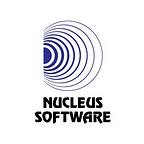Leveraging Artificial Intelligence for Increasing Business Efficiency
by Gaurav Marwaha and Ritika Dusad
About this series
In this series, we try to stay away from the hype and focus on how to apply Artificial Intelligence (AI) to specific business challenges and derive meaningful business benefits from this technology. As Andrew Ng, co-founder and former head of Google Brain and pioneer of online education through companies like Coursera and deeplearning.ai has recently mentioned in an interview- focusing on being ‘AI first’ may not be the best approach (https://www.technologyreview.com/2021/03/26/1021258/ai-pioneer-andrew-ng-machine-learning-business). In fact, ‘‘in terms of how I execute the business, I tend to be customer-led or mission-led, almost never technology-led.” We concur with his point, and through this series of blogs, we try to point out different methods to be utilize the power of AI while being focused on solving business needs.
A question on top of any corporate leader’s mind today is- how do I prepare my business to ride the wave of Artificial Intelligence?
Extracting business value from the myriad of promises made by Artificial Intelligence is proving to be a challenge due to the problem of plenty. From robotic process automation (RPA) to deep neural networks replacing human decision-making, AI offers numerous tools, techniques, algorithms, and models that can test the best of businesses.
The financial services industry is not averse to these challenges. Automation and digitalization of multiple steps in the loan approval cycle have undoubtedly improved processing times. However, the convolution of human and digital aspects of the loan cycle process does increase complexity. On the human side, processes involved are — sales, back-end data entry, field agent verification and approvals. Some of the digitized processes are de-deduplication checks, bank verification, risk assessment, credit bureau checks. To stay competitive in the increasingly digital environment and meet customer demands of processing loans faster, some banks promise a 5-minute loan. There is however utmost pressure to complete the tasks outlined above while still keeping financial risk at its lowest.
It is in under this pressure and complexity that AI can demonstrate its true potential.
A fresh approach to designing workflow processes
Typically, business processes are designed to optimize task flows and extract maximum throughput in a short period of time from human and system resources. A critical assumption made when such processes are defined is that both the human-related tasks and third-party systems involved will work to their true potential. Since there are fallibilities in this assumption, a better approach would be to monitor the task flow, collect data over time and then optimize the flow for improved resource utilization with the help of AI.
A few examples of how AI can assist workflow design for financial institutions are-
1. As data is collected on a bank’s branch officers’ schedules and holiday calendars, AI models can be used to optimize scheduling of tasks to reduce delay and loss of productive hours.
2. With time, as a bank officer masters a particular type of loan data entry, an AI system would learn about such expertise of different officers and help optimally assign tasks in the bank branch could be to specific expert officers thus increasing efficiency.
3. An AI system could monitor the flow of data during the day and schedule third party transactions that can lead to slowing down at off-peak hours.
4. Prioritization of various tasks could be learned and modeled by an AI system, which may help speed up pipelines for more important tasks once the priority-based AI model has been activated.
5. For tasks such as physical verification of place of work and residence, modeling of agents’ typical current location and distribution can assist in assigning nearest agents for the verification tasks, thereby reducing processing times.
The above-mentioned points exemplify how initially unknown to the process designer, ‘dynamic’ data is generated while a task is performed. Since each of the different data elements are specific to each lender, a different AI model is generated respectively per lender as their related data builds up over time. Partnering with Technologists who understand their business process as well as have an expert hold on AI is the shortest route to success for financial institutions inching their way to minute-loans.
Hype & reality for data science
There is nothing new about the hype around data sciences. In 2014, data science figured in “at the peak” quadrant of Gartner’s technology hype cycle report (https://insights.dice.com/2014/08/13/data-science-internet-things-gartner-hype-cycle). In a more recent report from 2020 in fact, machine-learning / artificial intelligence while expected to move into the ‘plateau of productivity’ by then, still reside on the ‘innovation trigger’ and ‘peak of inflated expectations’ quadrants of the hype cycle (https://www.gartner.com/en/documents/3988118/hype-cycle-for-data-science-and-machine-learning-2020). This indicates that while our understanding of this technology has increased, new areas have also been uncovered contributing to the broadening of the field. Such reports also signal that perhaps AI’s adoption for the benefits of business may have been sparse. This is probably because businesses have not been able to leverage this technology enough.
As we navigate these hype cycles and see a rapidly changing technology landscape, we find that there are people at both the ends of the spectrum. Some claim that new age analytics is nothing more than a fancy term for data mining. Others think that perhaps AI will soon become so powerful that it will surpass human intelligence.
The next blog in this series will talk about how to identify a business problem that could be solved with Artificial Intelligence.
